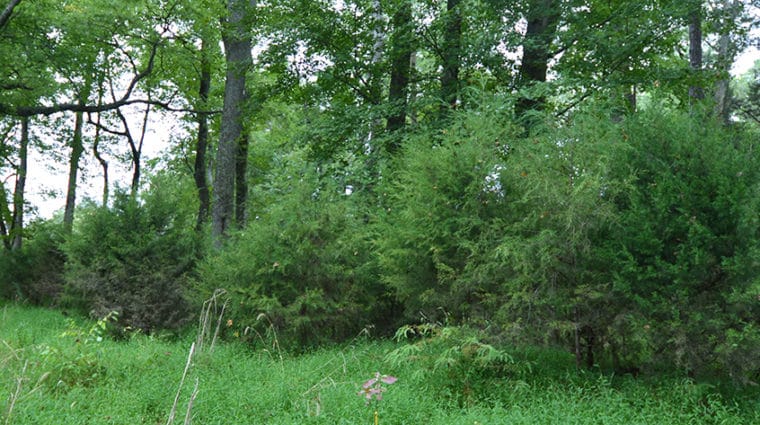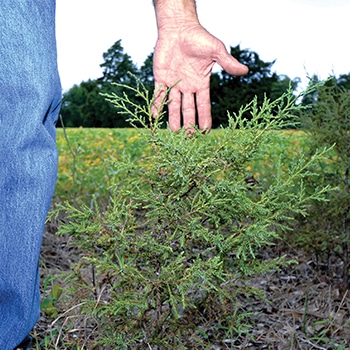When my wife and I suddenly found ourselves managing her family farm, we learned we also inherited a deer population of epic proportions. Huge herds of deer ran through fields and marshes, eating everything in reach. We are on a peninsula in a large tidal stretch of the James River, and the deer population grew whenever hounds ran the neighboring woods. We had a lot of deer, and something had to be done.
Our goals for the property included planting warm season grasses and other native species for wildlife cover and run-off protection for the Chesapeake Bay, but the extremely high deer population made growing anything difficult. If it was close to palatable, the deer ate it.
Enter Bob Duncan, then a biologist with Virginia’s Department of Game and Inland Fisheries and now the executive director. Bob helped us find several hunters to fill our numerous DMAP tags annually, and over 10 years we trimmed the herd to a moderate population level, using Quality Deer Management to bring the population into balance with the habitat and improve herd health.
As deer numbers reached a healthy level, we were able to establish quality forage and cover on what was formerly marginal farmland. All the techniques we use are right out of the textbook, with the exception of one.
Cedar walls can be used to screen hunter movements from deer, add security to sanctuaries, or hide hunting areas from traffic on public roads. The uses in deer hunting and habitat management are many.
On our peninsula in the river, wind can be excessive, and it can be constant for days on end. For wildlife, thermal cover in winter is crucial. Drawing on years of experience in the gardening industry, we developed a method for planting cedar windrows that create a micro-clime on the leeward side, which deer and other wildlife use for protection. However, our cedar hedges also screen exposed hunting areas from farm traffic, and they protect our greenhouses and storage buildings. Cedar walls can be used to screen hunter movements from deer, add security to sanctuaries, or hide hunting areas from traffic on public roads. The uses in deer hunting and habitat management are many.
To make a tight and fast-growing cedar hedge, I start with seedlings around six inches tall. We plant three staggered rows about 10 to 12 feet apart, with seedlings about 6 feet apart in the rows. This spacing allows a canopy to form fast, reducing weed pressure sooner.
As the cedars grow, I will shape them by trimming the tips of the branches. This can be done with shears or a machete on larger cedars. I start the pruning at planting time and will return to trim again every two or three years. Most important is to remove the tip of the central leader – the main stem – which forces the side branches to grow. They become equally dominant. Yes, I’m ruining it as a tree, but I’m turning it into a thick, short shrub.
This pruning is only to shape the plant and takes a few moments at each plant. About every three to five years, or whenever I see it becoming dominant again, I will cut the central leader again. When we cut the tops out of older cedars, we’ve found the tops make good dove-blind material.
Using the close spacing, multiple rows, and pruning, a windproof cedar wall takes less than 10 years to grow and may happen faster in warmer regions. The only other chore is that we spray under the cedars every three years to remove vines and saplings that will eventually compete with the cedars.
You can order red cedar seedlings from a nursery, but we use seedlings we collect on the farm and transplant. Do this only with small seedlings unless you are willing to water larger transplants for the first summer.
We have one hedge that is 15 years old and 300 feet long. It protects a 10-acre food plot, and during winter storms I have seen 30 to 40 deer bedded behind this wall. On the many windy days we have here, all is quiet behind our cedar wind walls. They take little effort and have never cost a dime.

